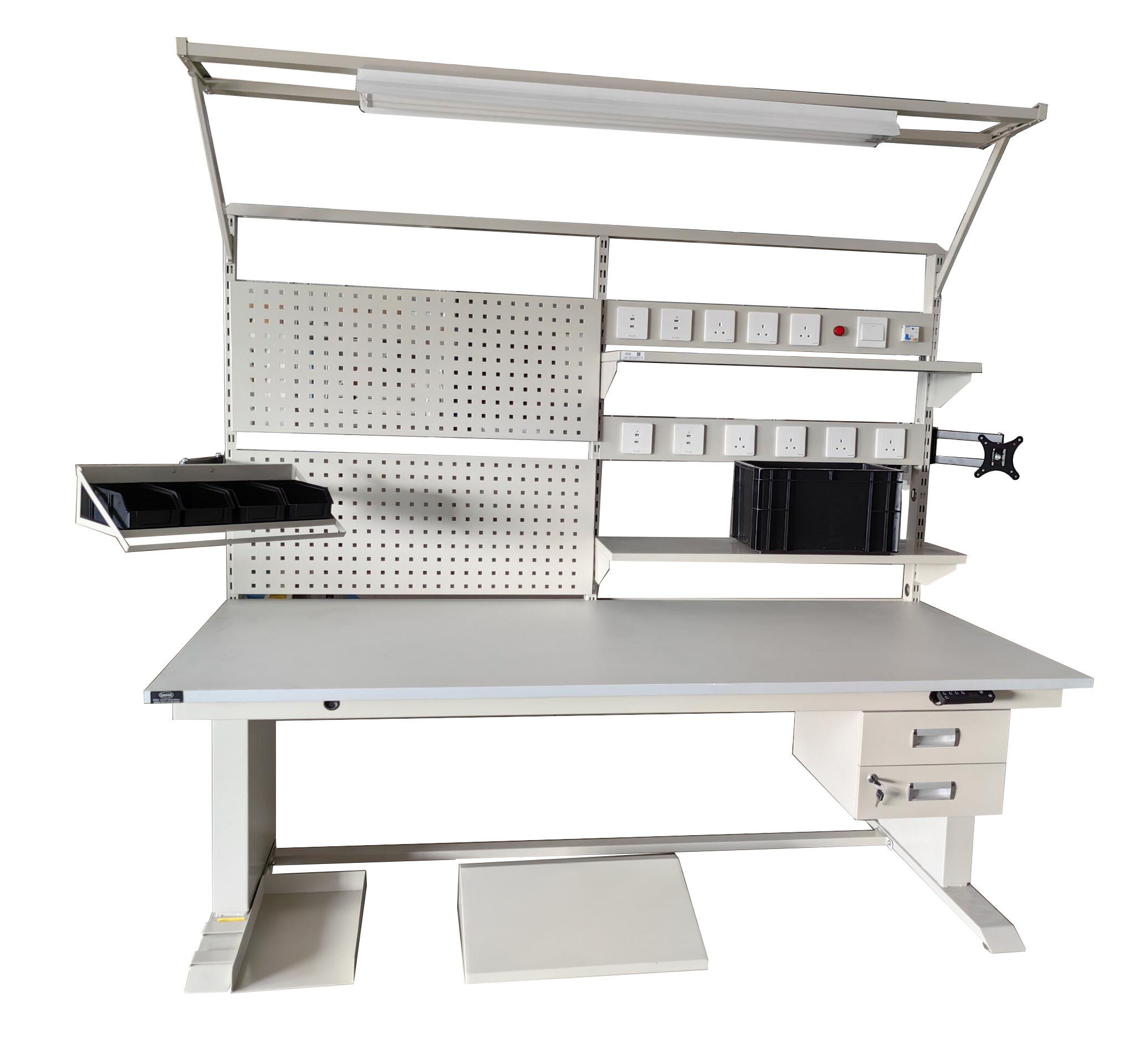The installation of Electrostatic Discharge workstations demands accurate implementation because mistakes can trigger major issues in electronic processing operations. Any ESD occurrence results in noticeable harm to electronic components which produces both failing products and substantial monetary losses. The following list presents several mistakes you should prevent during ESD workstations setup to achieve protected manufacturing environments and operational efficiency.
Installation Errors and Compliance Risks
Lack of Proper ESD Floor Mats
Installation of suitable ESD floor mats represents a major mistake when setting up ESD workstations. The floor mats serve this fundamental purpose by releasing electrical charges building up on human bodies and surface materials. The absence of ESD equipment increases the chances of events that harm sensitive parts. Absolute prevention of improper workstations will occur by supplying every area with certified ESD floor mats while performing resistance to ground testing at regular intervals.
Misplacement of ESD Protection Materials
The incorrect placement of ESD protection materials remains a usual installation issue. Effectively controlling ESD demands proper placement of these materials throughout the workstation area. The set of ESD protection items includes special gloves designed for ESD purposes together with wrist straps and mats for work surfaces. Inconsistent or Improper usage of these protection materials expands static discharge possibilities at non-protected areas.
Neglecting Regular ESD Audits
ESD safety standards require periodic audits for maintaining compliance with their requirements. Failure to conduct regular audits brings about industry violations and worsens the probability of ESD-related damage. Plan periodic ESD audits that assess control measures performance while identifying ways to improve static protection on a continuous basis.
Improper Grounding
Inadequate Grounding Points
Any ESD protection plan depends on adequate grounding points yet having insufficient grounding points stands as the most damaging mistake that can happen. Installation of grounded points is required at major ESD-sensitive work areas. The absence of proper grounding points leaves spaces for static charges to accumulate until they suddenly discharge. Each workstation requires a dedicated ground point for static discharge protection that should have easy access and regular performance checks.
Faulty Grounding Equipment
Grounding equipment that is incorrect or insufficient presents an important danger to ESD protection. The regular testing of wrist straps together with grounding cords and conductive footwear must become a standard practice to validate their operating condition. Malfunctions in grounding equipment create a deceptive environment which enables ESD incidents to occur undetected with the passing of time. Defective equipment must be inspected regularly while needing to be replaced immediately to keep an ESD control system reliable.
Humidity Control Oversights
Ignoring Optimal Humidity Levels
The connection between moisture in the air and static electrical discharge is scientifically established. ESD protection demands humidity control since low humidity conditions substantially increase static formation opportunities. Most ESD-safe areas miss out on important care of their proper humidity ranges. To avoid static electricity development the relative humidity range should remain between 40% to 60%.
Insufficient Humidity Control Measures
Although monitoring humidity exists the actual methods utilized for its control often fall short of proper effectiveness. The use of basic air conditioning units does not provide sufficient protection. The environment requires specialized humidifiers and alternative humidity control systems to establish proper maintenance. Workspace safety can be ensured through periodic system maintenance and adjustment for both check-ups.
Supplier Selection Tips
Inadequate Supplier Vetting
When building an ESD control system the quality and reliability heavily depend on selecting proper suppliers for ESD protection equipment. The absence of proper supplier assessment creates the chance to select equipment that falls short of quality standards. You should conduct extensive assessments of potential suppliers to prevent this issue. Your selection of suppliers must incorporate assessment of their established track record along with their relevant certifications while reviewing positive customer assessments to validate their highest possible standards.
Overlooking Supplier Support and Training
Support and training programs supplied by suppliers become essential criteria to consider when making supply selections. Neglecting these support services results in inadequate understanding for team members regarding the correct methods of implementing and maintaining ESD control systems. The selection of suppliers should result in providers who give extensive support and training programs to make sure your team has proper skills to handle ESD workstation setup and maintenance.
Failing to Consider Total Cost of Ownership
Running after initial purchase discounts can result in expensive errors because you neglect to review the complete expenses of ownership. Installation of low-cost materials and tools results in product deterioration thus requiring more repairs and larger repair expenses together with more ESD incidents. Make purchases based on product endurance and maintenance needs and reliability factors to achieve enduring cost efficiency.
Neglecting Supplier Compliance with ESD Standards
Your suppliers must follow recognized ESD standards when performing their operations. Your entire ESD control system becomes at risk when you disregard this requirement because quality problems and compatibility issues may appear. Make sure your suppliers meet at least one of the recognized standards among ANSI/ESD S20.20 or IEC 61340-5-1 to retain a durable ESD protection environment.
Attention to these typical errors together with preventative action will help you create an efficient and effective ESD workstation setup. The protection of electronic components during static-related incidents depends heavily on well-executed installation practices and grounded systems along with proper humidity management and suitable supplier relationship maintenance.
Table of Contents
- Installation Errors and Compliance Risks
- Misplacement of ESD Protection Materials
- Neglecting Regular ESD Audits
- Improper Grounding
- Faulty Grounding Equipment
- Humidity Control Oversights
- Insufficient Humidity Control Measures
- Supplier Selection Tips
- Overlooking Supplier Support and Training
- Failing to Consider Total Cost of Ownership
- Neglecting Supplier Compliance with ESD Standards







